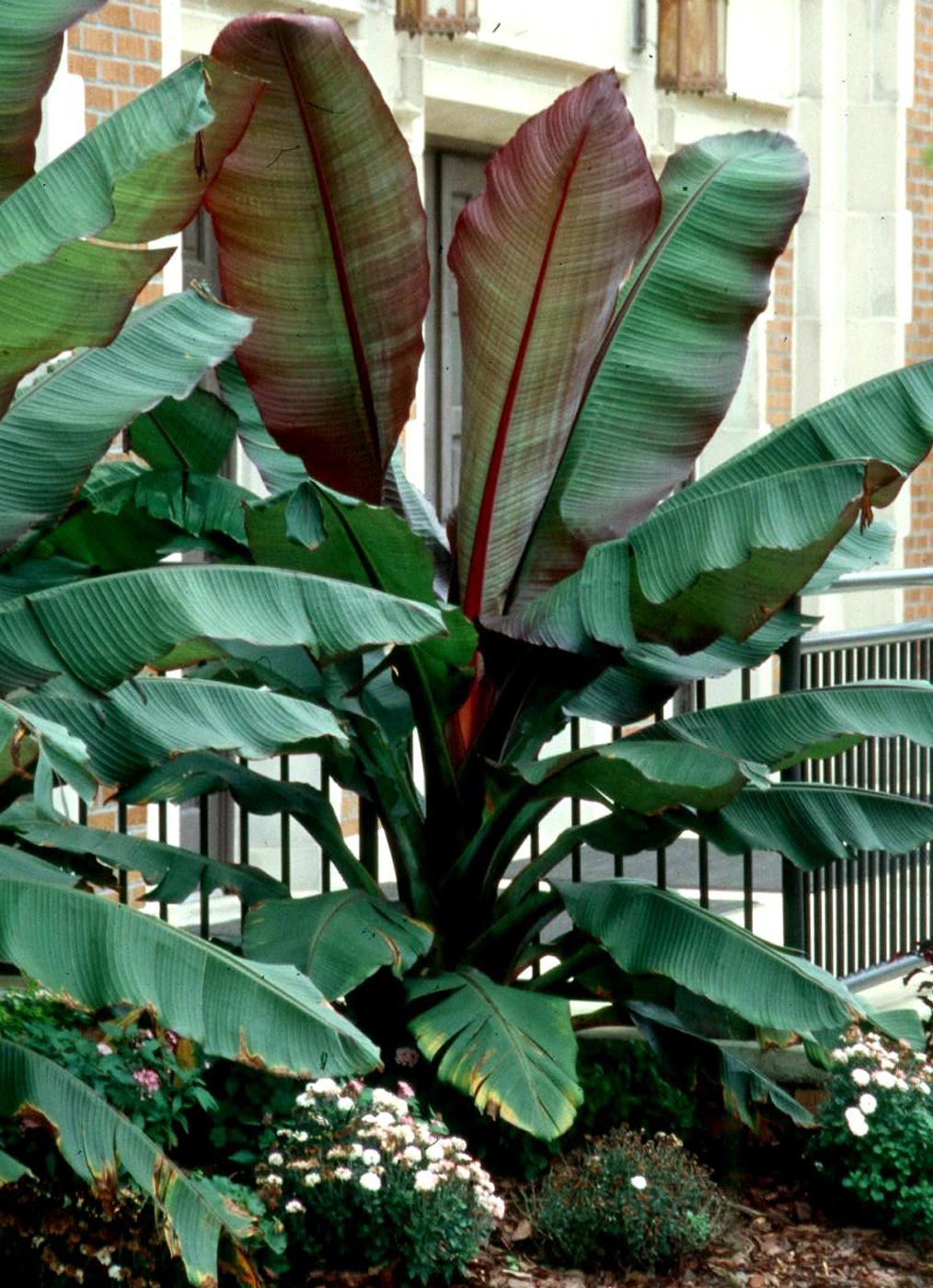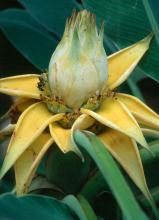Information Possibly Outdated
The information presented on this page was originally released on June 30, 2003. It may not be outdated, but please search our site for more current information. If you plan to quote or reference this information in a publication, please check with the Extension specialist or author before proceeding.
Red Abyssinian is the most beautiful banana
By Norman Winter
MSU Horticulturist
Central Mississippi Research & Extension Center
It seems the gardening public has finally discovered the most beautiful banana in the world, the Red Abyssinian. This banana is not the least bit cold-hardy, but who cares when it grows like a rocket and makes a landscape statement from spring until the first frost in the fall?
The Red Abyssinian is known botanically as Ensete ventricosum Maurelii. Most of the bananas we grow are of the genus Musa.
On a recent journey though South Carolina, Georgia and Alabama, I saw these bananas popping up at shopping centers and public buildings everywhere. They are even at some of our malls right now.
The most unbelievable display I have ever seen using the bananas was at First Baptist Church in Magee last summer. The banana plants were huge, including the trunk. I took off my size 10 shoe and placed it in front of the trunk of the plant. I was astounded at how small the shoe appeared.
If you just can't see yourself buying a banana that is not cold-hardy, you could do what I do. I grow mine in a container and put it in the garage once cold weather arrives. You could also choose another, more cold-hardy species like the Chinese Yellow Wax banana.
The Chinese Yellow Wax banana is known as Musella lasciocarpa and was believed to be extinct until just a few years ago. Now they, too, are popping up at garden centers and in landscapes everywhere. This banana is cold-hardy through zone 7 and has a lot to offer the tropical gardener.
Its olive-gray-green leaf color is most unique. This is a smaller banana, usually staying under 7 feet, that produces a lot of suckers close to the plant. If these are kept cut back, the banana develops a striking trunk with a bulbous, round bottom.
The flowers are absolutely incredible. They are very large, yellow-orange and indeed have a waxy feel.
The most cold-hardy banana is the Japanese fiber banana, Musa basjoo. Guess what? Though it may seem unbelievable, well-mulched Japanese fiber bananas have been known to return from minus-20-degree temperatures.
The flowers are among the most beautiful and exotic. But don't start counting the harvest yet -- these bananas aren't edible.
Bananas were for sale at all of our official garden and patio shows this spring, and even at the Fall Flower and Garden Fest last year in Crystal Springs.
Look for remaining bargains on all bananas now. The Japanese Fiber banana likes full sun, while I like a little afternoon shade for the Red Abyssinian and the Chinese Yellow Wax. Fertile, well-drained, organic-rich soil is needed for both vigor and performance.
Amend the soil if needed with 3 to 4 inches of compost or humus, and till to a depth of 8 to 10 inches. Ideally, beds with bananas need 3 pounds of a slow-release fertilizer with a 2-1-2 or 2-1-3 ratio per 100 square feet of bed space.
Sometimes these formulas are hard to find, so you can use 3 pounds of a 12-6-6. Plant the banana at the same depth it is growing in the container.
Bananas are heavy feeders and need light monthly applications of fertilizer, along with plenty of moisture. Keep them well-mulched. Trim leaves as needed to keep the plant attractive. Once the foliage has been frosted in the fall, trim and add an extra layer of mulch.
Wet, soggy, winter soil places a spring return in jeopardy despite the cold-hardiness of the Japanese fiber banana and the Chinese Yellow Wax.
Once you get yours you will notice that it does sucker. These can be divided to place in other garden locations, or you can give some to me!
Use these bananas to add coarse-textured foliage to the perennial or cottage garden, transforming it for a look of the islands. Plant them around swimming pools, water gardens and next to the deck, porch or patio. Grow with other tropicals like elephant ears, hibiscus and allamandas.









